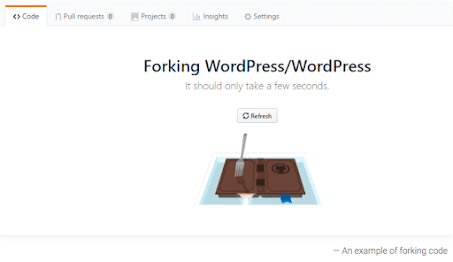A website and cloud-based service called GitHub enables developers to store and manage their code as well as track and manage changes to it. You must be familiar with two related principles in order to fully comprehend what GitHub is:
- Version control
- Git
We'll first go over those two concepts in this essay. Then, we'll delve deeper into GitHub and discuss how you can utilize it to collaborate with WordPress and/or Kinsta.
Version Control: What Is It ?
Version control facilitates the management and tracking of coding changes in software projects. Version management is crucial when a software project expands. Consider WordPress
WordPress is currently a huge project. Directly allowing a core developer to change the "official" source code wouldn't be efficient or safe if they wanted to work on a particular area of the WordPress codebase.
Instead, branching and merging are safe development methods made possible by version control.
A developer repeats some of the source code using branching (called the repository). The developer can then safely modify that section of the code without jeopardizing the project's overall effectiveness.
The developer can then integrate that code back into the primary source code to make it official after getting their particular portion of the code to perform properly.
Then, all of these modifications are monitored and, if necessary, can be reverted.
What Is Git?
Linus Torvalds developed the open-source version control system known as Git in 2005.
Git is a distributed version control system, which implies that every developer's computer has access to the whole codebase and history, making branching and merging simple.
Over 87% of developers use Git, according to a Stack Overflow developer study.
So What Is GitHub, Then?
Check out our video to learn the difference between Git and Github
Exploring The GitHub Interface
Here is the WordPress source code stored in a GitHub repository so that you can get a rough idea of how it looks:
From this point, you can see the many branches that are under development as well as the most recent commits (which function something like "storing" a file"). You could even be able to build up your own branch and make your own commits there, depending on how a repository is configured.
And after making some adjustments, you may use a pull request to return the code to a branch. In essence, a pull request is a request to the branch's maintainer to include your code. Additionally, it enables that individual to see precisely what changes you made to the code.
By selecting the Fork button, you might also make permanent changes to the WordPress source code on your own account (a fork is conceptually similar to a branch, but a fork is more permanent):
The earliest version of WordPress was a fork of b2/cafelog. A beginner-friendly instruction for getting started is available in GitHub's Hello World guide if you'd want a little more information on how to use the platform.
How To Use Git And GitHub At Kinsta
Other Ways To Use Git And GitHub With WordPress
How To Get Started With GitHub
To get started with GitHub:
- Sign up for a free GitHub account
- Follow the GitHub Hello World guide to understand the most popular actions you’ll likely want to take
- Read: WordPress Version Control (What It Is and Best Solutions)
- Read: Git vs Github: What’s the Difference and How to Get Started with Both
Save time, costs and maximize site performance with:
- Instant help from WordPress hosting experts, 24/7.
- Cloudflare Enterprise integration.
- Global audience reach with 35 data centers worldwide.
- Optimization with our built-in Application Performance Monitoring.
All of that and much more, in one plan with no long-term contracts, assisted migrations, and a 30-day-money-back-guarantee. Check out our plans or talk to sales to find the plan that’s right for you.










Social Plugin